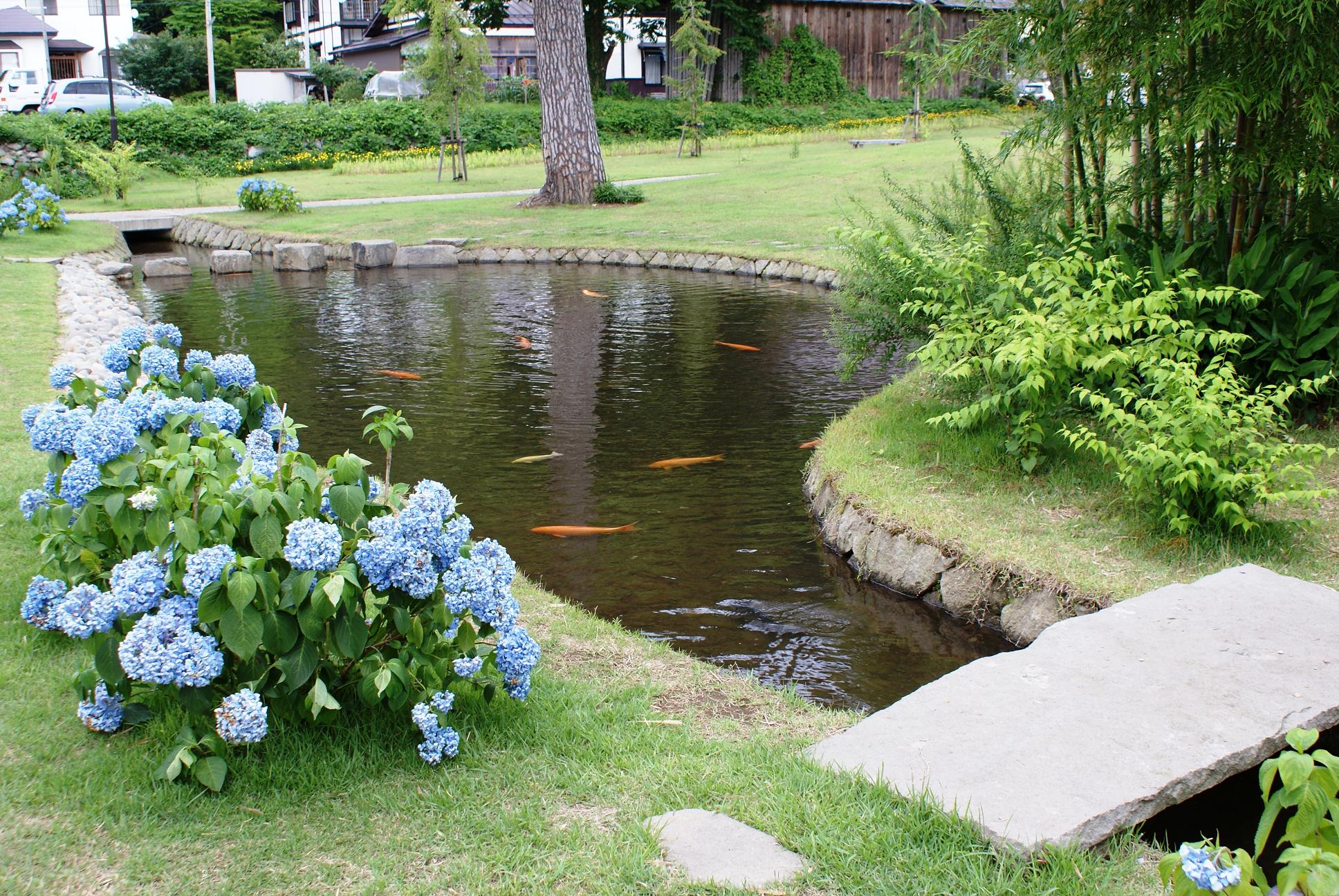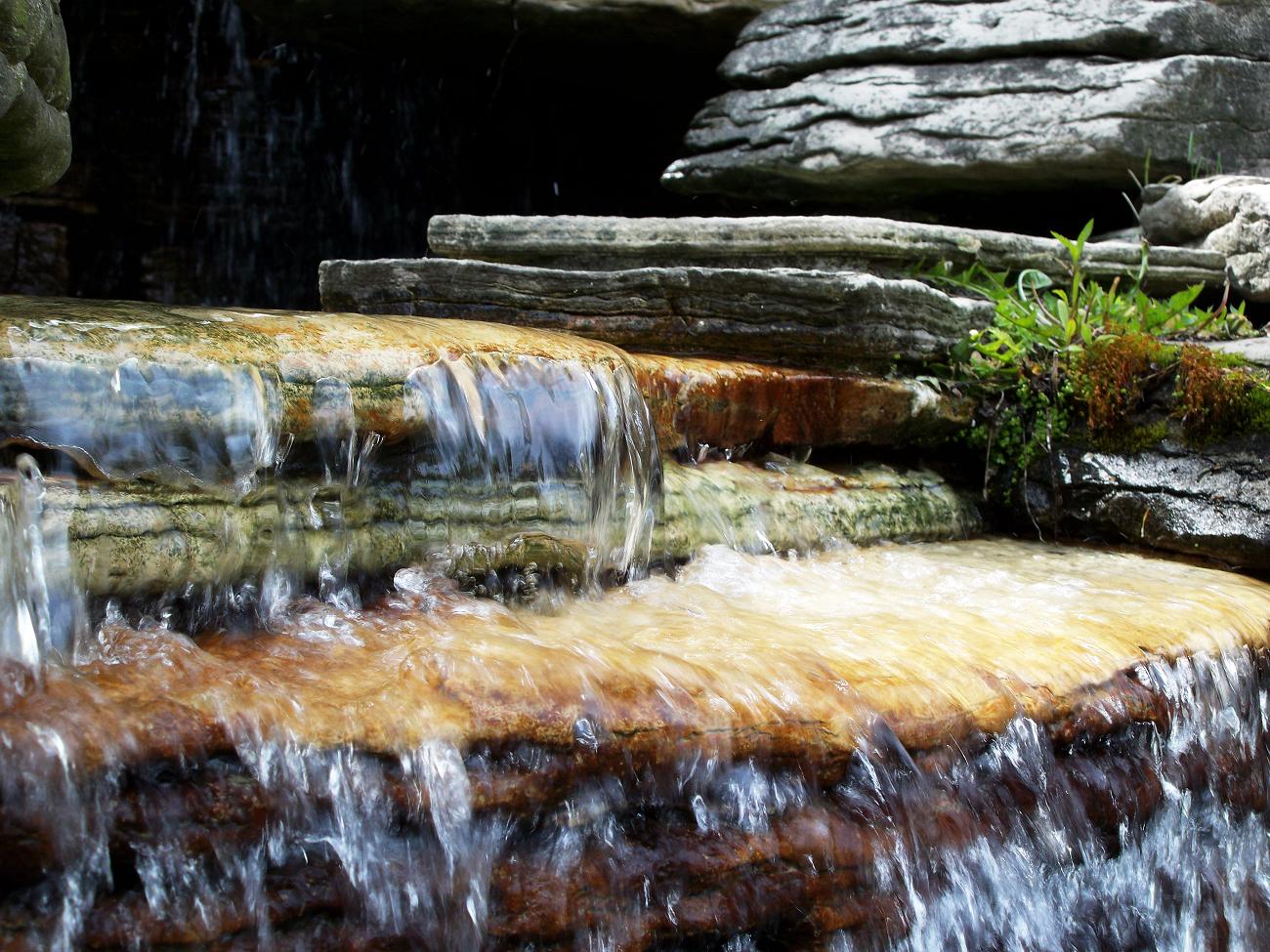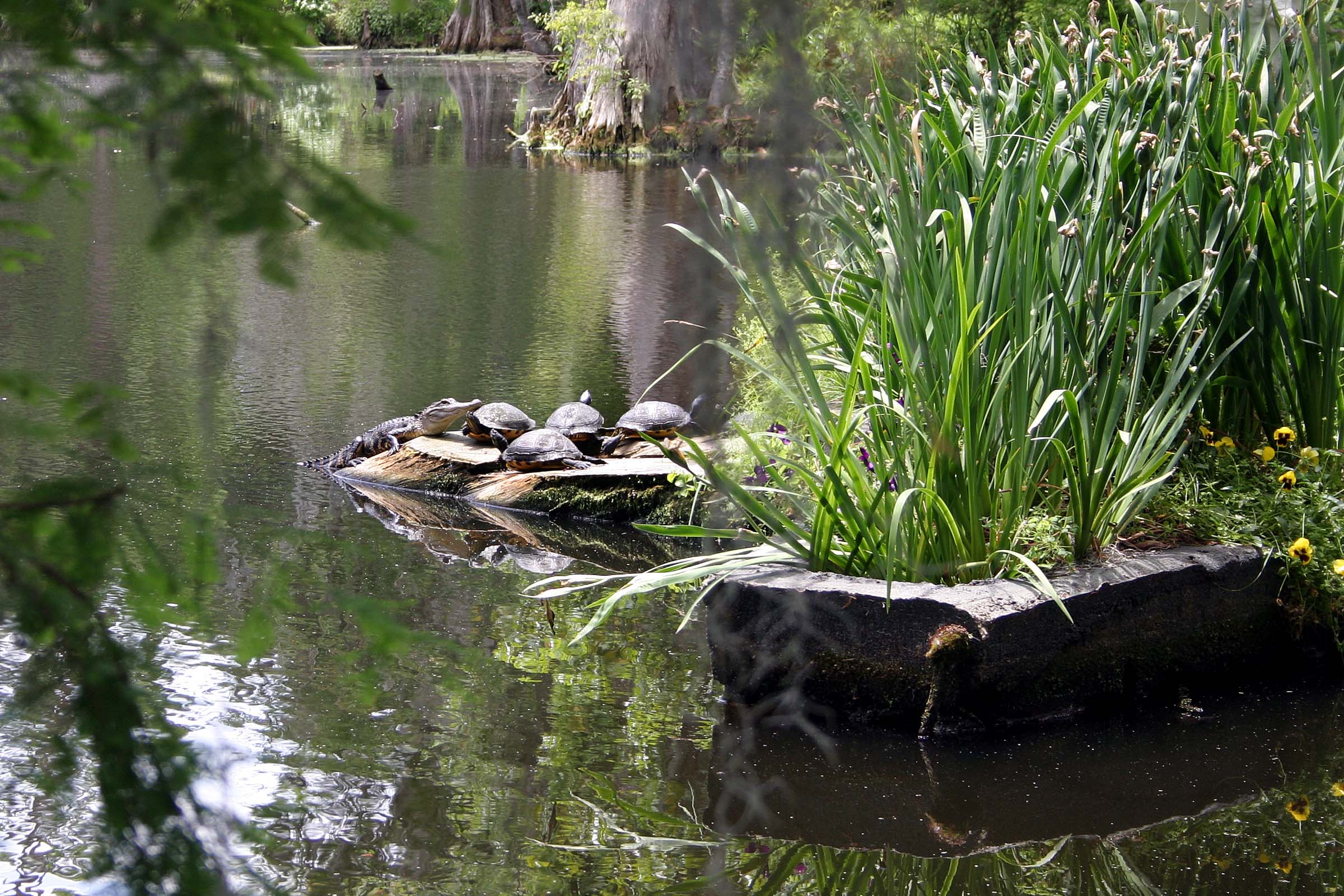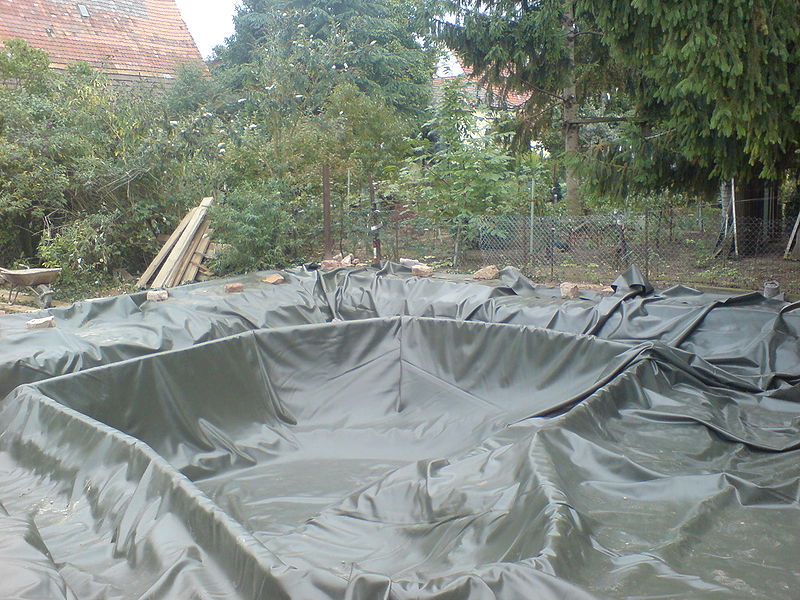Fish farming is a very old method of agriculture which produces a steady source of protein. Maybe you have the potential to grow a wide variety of fish right in your back yard pond or fish tanks. The most common types of fish that can be easily raised for commercial or personal consumption are tilapia, carp, salmon, and catfish. Growing fish in your backyard or fish tanks can be fun as well as rewarding. It could also be a source of income for you if you wish to later sell your fish for profit.
Fish farming as a sustainable food production system
Growing and raising fish for commercial purposes in your backyard can be a sustainable method of food production if you mimic the natural relationship found in the ecosystem. You could easily dig a pond in your backyard, fill it up with water, raise several kinds of fish for commercial use, and benefit from it. The methods of sustainable fish farming are described step by step:
Step#1: Select a location
To start a fish farm in your backyard, you should select an appropriate spot for your pond. Your pond should be in a place that is naturally low in your backyard and it should be able to collect water naturally. Draw sketches of your pond and plan out the location with exact dimensions on a piece of paper. Doing so will help you figure out the actual shape and size of the pond and how well it will fit into your backyard. If you live in an area where the summers are hot and winters are cold, plan a deep area of 8-12 feet as part of your pond where fish can find shelter during hot summer or cold winter. Make sure to include plants in your plan. Your plan could also include fountains or waterfalls to make your pond attractive.
Step#2: Plan for digging your pond
Once you have selected a spot, consider the tools you will need for digging. Before you start digging, mark the outline of your pond. You may use ropes, garden hoses, or extension cords to mark the area. You can adjust the shape and size of your pond until you are happy with the shape and size. Your final layout should include plenty of plants and surrounding areas around you pond. If you plan to dig a large pond, you may need to rent a bobcat. Contact your local authorities first to make sure the area you are in permits such landscaping in your backyard. Also make sure that there are no utilities such as electric lines, gas pipes, and water or sewerage lines buried under ground where you plan to dig.
Step#3 Digging your pond
If you plan to dig a small pond you may use a shovel or rent a bobcat if you plan for a bigger pond. One good technique for digging is to dig at 16 inch depths at a time and pile the dirt nearby at the back of the pond where you can place your water fall. Dig deeper towards the center where you can place a pump for your fountain. Dig in steps and plan for plants to be placed on the steps at different levels of depth. Hand-dig the edges of the steps to make it look chiseled and use it for plant shelves. Make your pond at least 5 feet deep at the center.
Step#4 Placing the pond liner
Once you have dug a hole, fill it up with mason’s sand and rake it smooth. Cover the sand with a geo textile fabric. This will protect the rubber liner which you will place on top of the fabric. Your fabric should be big enough to cover the hole you made for your pump. Fold your rubber liner length wise. Unfold your rubber liner starting from the center of the pond. Press the liner firmly with your hand and feet over the center pit, and fill it with water to hold your liner in place.
Step#5 Placing stones
You want to handle stones as little as possible. It is best to have your stone delivered right at your pond or backyard. Start placing your stones in stacks, starting from the floor of the pond, the plant shelves, to the sides. The stones along the sides should be a foot wide. Place the pump and hose at the center of the pond on a flat rock and the waterfall at the side of the pond. Connect your hose and power cord to electric outlets.
Step#6 Adding fish
Make sure you choose the right kind of fish for your pond. Fish like trout need highly oxygenated water and need the water to remain cool throughout the year. Pumpkinseed or Blue gills are more flexible because they grow very fast and do well in almost all types of ponds. Large predatory fish such as perch or bass require more space and food. Bass also tend to eat all their relatives in the pond. When you order fish, they will appear in a small plastic bag. Make sure to add the water that they came in into the pond so that they adjust easily with the surrounding.
Backyard fish farming can be highly beneficial. The system of aquaculture and poly culture where several species of fish are grown together has been used in China and Hawaii for many years. Your fish will need regular supply of food to grow faster. Never over feed your fish because it will give rise to more problems such as bacteria, fungus, or predators. It is also important that you maintain an ecological balance and do not produce pollution or excessive nitrogen through your pond.

Enjoy your pond and don’t forget to share this post!
Source: WorldWide Aquaculture







I would like to embark on fish farming. I need your help on which fish to grow and other requirements
Hi, Thanks for your comment. Please contact us at our office at 303-495-3705, and someone will guide you through. Thanks.
Gee wirsekill, that’s such a great post!
Thank you
Hello,
I was looking for an information about fish farming and enjoyed reading this. Now I would be appreciate for your advise here.
I have a big plot of land which is next to river and it’s altitude is 2300 M from sea level. There will be snow in the winter and water still be cold in summer.
As that plot is unused and no problem of running water I am looking for an option how to use it.
My question is can fish farming is possible there. If yes then which breed will better and what do i have to think of first.
thank you
Hi pbshahi,
Thanks for your query. We need to discuss your project in more details. I’ve notified our team about your question and someone will contact you with more details.
Thanks.
Hello,
Still waiting for a suggestion about the scenario ive mention abobe.
Would be appriciate for an advice .
Thank you
I would also need to constreat on fish farming and from time to time I will need your adivice
Some catfish or bluegill maybe bass no carp.
This is not fake at all
I stay in zimbabwe where temperatures raise over 4o degrees from august to early june.what determines when to change water?can i use cement to build a pond?wat is the name of suplementary food i can buy ?
Liberty
i stay in zimbabwe in matebeleland south province, i would like to embark on fish farming. i live in a rural area.
im intereresting to build backyard fish in my home were i live . but i need more advise
Hi Hashem
Thanks for your query. Please call Wayne at 303-495-3705
This seems like a good idea…to start a fish farm…..
Thanks for your comment! Please tell your friends.
Wonderful exoaanltipn of facts available here.
Thank you
I’m an architecture student, for my studio project we have to design a community center. Our site are located very near to the beach approximately 5 meter. And it happens to have a swamp at the site. I was planning on developing the swamp to be a fish pond for aquaculture purpose. So my question is, is it possible to create a fish pond near the beach?
Yes, it’s possible but you have to make sure that the type of fish you have suits the climate and the type of water you have. For example, you could keep salt water fish and fill up the pond with salt water. If you keep freshwater fish, make sure your pond has fresh water. Also make sure that the water doesn’t leak into the ocean, and vise versa. Also make sure your fish doesn’t escape into the ocean.
I have a home in Brittany France with a water trough 3m x 3m x 80m long close to a Salmon/Trout river that I believe could be ideal for a Fish farm. Your thoughts and ideas would be welcomed.
Hi Mike,
We could arrange a meeting and talk about it.
I am ecited on the information I got because I want to start a project on fish farming.
Hi Christine,
Would you like us to help?
how long does tilapia zili take to be harvested from its fingerling age and how can one manage to make tilapia 1kg wt? reply
Hi baluku josephat,
Thanks for your message. Tilapia grow really fast, from fry to plate in about 6-7 months. With enough food and care they can grow up to 800 grams each or more. You can find more information on raising Tilapia at home here. http://worldwideaquaculture.com/turn-your-backyard-into-a-fish-farm-raise-tilapia-at-home/
I live in Gaborone where temperatures can be extremely hot, but I am interested in backyard fish farming for commercial purposes, kindly advise on whether I need to have a shade where I would have erected ponds or tanks for rearing the fish, and also your contact as well as physical address to come and see how its done and how much it would cost; fish tanks for a beginner.
Thank You.
Hi Ene Segola,
You can get more information at our sites, we’ll contact you if you’d like a free consultation call.
I have gained alot of information from u guys thanks alot,i live in lesotho and want to produce fishes,is there anywy to get guidence from u guys
Thanks
The forum is a brihtger place thanks to your posts. Thanks!
Thank you
Your article is so nice. I like the way you explain it all in simple terms. very impressive.
In Nigeria, there is something that really determines the success of a fish farm is the chemical composition of the water that will go into the pond. We had to contact a swimming pool in Lagos (http://www.csw.com.ng) to help us with the water analysis for our fish pond. I think you should do an article on water chemical compositions to help many more potential fish farmers…..You are doing a great job
Thanks for the post. I would like to know the minimum size of a backyard pond and how deep it should be. Please help me with information to start a small backyard fish pond.
Yvonne,
We certainly can help you with your aquaculture consulting needs. Here are several things we can do for you. First, we are going to make you a FREE member of our site where we teach courses and have live webinars about all kinds of aquaculture and agriculture. That site is called http://www.eatcommunity.com and you will get an email with login instructions.
Second, one of our staff will contact you and see about scheduling a brief FREE call or skype (for outside US) conversation. He will coordinate the timing for us.
Finally, on the http://www.eatcommunity.com site there is a questionnaire you should fill out to tell us a little about your aquaculture interests and needs. Please fill that out.
Areeb
how long pond require for making a pond for fisheries
Adarsh,
Thanks for your question. It is a good one. I cannot answer it directly without getting more information from you. However, we have a site where you can get much information about fish farming and all other kinds of agriculture and what we call ecolonomic living (http://ecolonomics.org). That site is http://www.eatcommunity.com. We will be making you a FREE Member of that site and then we can communicate with you easily about your fish farming questions. On that site there is a questionnaire you can fill out to tell us about your aquaculture interests and even schedule a time to talk with us. I hope this has been helpful and keep up your aquaculture dreams! You are helping make the planet better.
Areeb
Thanks alot for Your important information on backyard Fish farming!Am Just about To try It.
James,
Here are several things we can do for you. First, we are going to make you a FREE member of our site where we teach courses and have live webinars about all kinds of aquaculture and agriculture. That site is called http://www.eatcommunity.com and you will get an email with login instructions.
Second, one of our staff will contact you and see about scheduling a brief FREE call or skype (for outside US) conversation. He will coordinate the timing for us.
Finally, on the http://www.eatcommunity.com site there is a questionnaire you should fill out to tell us a little about your aquaculture interests and needs. Please fill that out.
Areeb
My location is in Ghana west Africa, am planning a sea water pond please how and where can i get sea water shrimp and tilapia to buy?
Philip,
Thanks for your question. It is a good one. I cannot answer it directly without getting more information from you. However, we have a site where you can get much information about fish farming and all other kinds of agriculture and what we call ecolonomic living (http://ecolonomics.org). That site is http://www.eatcommunity.com. We will be making you a FREE Member of that site and then we can communicate with you easily about your fish farming questions. On that site there is a questionnaire you can fill out to tell us about your aquaculture interests and even
schedule a time to talk with us. I hope this has been helpful and keep up your aquaculture dreams! You are helping make the planet better.
Areeb
i also want to start a project on commercial fish farming and would like to have more advice on how i can start especially on building the ponds……please i need your help preferably send me an email on tinashebrian2@gmail.com
your help will be greatly appreciated.
Tinashe,
We certainly can help you with your aquaculture consulting needs. Here are several things we can do for you. First, we are going to make you a FREE member of our site where we teach courses and have live webinars about all kinds of aquaculture and agriculture. That site is called http://www.eatcommunity.com and you will get an email with login instructions.
Second, one of our staff will contact you and see about scheduling a brief FREE call or skype (for outside US) conversation. He will coordinate the timing for us.
Finally, on the http://www.eatcommunity.com site there is a questionnaire you should fill out to tell us a little about your aquaculture interests and needs. Please fill that out.
Areeb
I have a one dought if1000 fishes will be free survival in how much area in lenth × breath
am working with an organisation that is introducing fish farming for small holder farm in my district and i would love to learn more on how to best set up a fish pond,in a cost efective way ,especially to help beginers that would not have investment money to set up but would them selves dig and make ponds…
Hi, do you organize a course on fish farming generally? Which country and how do I go about it pls. I ve already doged my pond about to finish.
I am a kid who is trying to convince my parents to have a fish farm. I don’t like fish but my family does. they buy it a lot and its costing us a lot of money. My parents own a 1/2 acre lot but they say its too small for even a small pond. we have about 3/4 of the acre left to do stuff with. it will snow in the winter and it will be hot in the summer… what do i do? i will take anyone’s advice not just the content provider’s
i would like to start a small fish commercial. i need your help how to dig a pond.
Can you assist me with funds and resources to start my home fish farming please.
Thank you.
Thomas
Pls I wish to contact you personally and assistance in fish farming. Pls may I know ur country code to enable !e call you.
I would like to start this fish farming project by my farm.I want to build a dam wall
I am in Botswana ans want start a backyard fish farming, please can you advice.
Thank you
Florence
Hello there,
My name is Aly and I would like to know if you would have any interest to have your website here at worldwideaquaculture.com promoted as a resource on our blog alychidesign.com ?
We are in the midst of updating our broken link resources to include current and up to date resources for our readers. Our resource links are manually approved allowing us to mark a link as a do-follow link as well
.
If you may be interested please in being included as a resource on our blog, please let me know.
Thanks,
Aly
I would like to know what time of food does the fish need to eat and how many quantity a day.
I am in South Africa in need to start farming fish but need more information please,where can I buy fish?
Hi i also want to start fish ponds but i need more of how do i do my pond